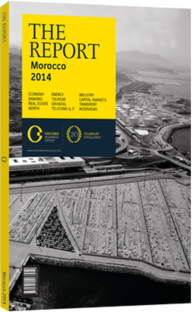OBG talks to Thierry de Margerie, Vice-President Africa, Alstom

Interview: Thierry de Margerie
How will high-speed rail benefit Morocco?
THIERRY DE MARGERIE: The high-speed rail line (ligne à grande vitesse, LGV) project, which we are participating in via the delivery of rolling stock, was chosen by the National Office for Railways following a broad-based long-term rail development plan that is intended to optimise the potential socioeconomic benefits of rail travel. The connection of the primary economic cities of Tangiers and Casablanca will not only contribute to their mutual development, but also to the development and enhancement of all areas along the line where the train will stop.
What impact will improved rail links have on overall connectivity?
DE MARGERIE: From mainline to freight to urban rail, Morocco has a rail infrastructure development programme under way that will stretch out over several years. The building of 1500 km of very high-speed line, along with the goal of boosting railway freight transportation from 35m to 50m tonnes by 2015, constitute some of the key components of the programme.
Urban transit is also central. With nearly 60% of the population concentrated in urban areas – compared with only 26% in 1950 – mobility within Moroccan cities has become a key priority. Road congestion, inadequate means of transport, and environmental and safety issues have become significant problems that need to be solved. To address them, Morocco has launched several mass transportation projects aimed at providing modern, reliable, comfortable and environmentally friendly modes of transport.
This highlights a key consideration for new rail projects. Today, passengers demand not only an efficient and comfortable service, but they also want it door-to-door. As a result, by ensuring that at each station there is an easy and available connection to local trams, trains or taxis, regional and local authorities can help boost the ridership of the high-speed trains. All along the LGV line, specific urban strategies can and will help ensure the intermodality with the high-speed line.
In light of the importance of intermodality, what sort of potential do you see for tramway development?
DE MARGERIE: The potential for tramway development, which we have participated in via projects in Rabat and Casablanca, is high in Morocco.
In fact, the successful experiences of Rabat and Casablanca in rolling out new tramways have caught the attention of mayors and local authorities in numerous other cities including Tangier, Fez, Agadir and Marrakech. They are now working to include tramway options within their urban development schemes. In the very short term, we also anticipate an extension of the new urban rail network in Rabat and Casablanca.
As for the profitability of the tramway in Morocco, it is important to bear in mind that tramways are projects with a strong social policy component. Tramways help address urban sprawl and ease traffic jams, allowing residents an affordable, comfortable and dignified means of transportation. The rollout of a tramway has the potential to renovate entire districts, improve connectivity, decongest streets and rehabilitate cities.
How are technological transfers on these and other infrastructure projects being ensured?
DE MARGERIE: International firms can roll out clear sourcing strategies to support local suppliers and help them reach international standards by sharing best practices. Today this overall strategy of technology transfer, which has been encouraged by the authorities and embraced by the private sector, has enabled the creation of thousands of jobs and opened up new export revenues. In January 2011, for example, Alstom signed a cooperation agreement with the Ministry of Equipment, Transport and Logistics and the Ministry of Industry that commits the firm to buying Moroccan-manufactured goods and exporting domestically fabricated inputs to Europe to supply our production systems. Partnering with universities and training institutes has also become an important catalyst for development, adding value and complementing the supply chain.
You have reached the limit of premium articles you can view for free.
Choose from the options below to purchase print or digital editions of our Reports. You can also purchase a website subscription giving you unlimited access to all of our Reports online for 12 months.
If you have already purchased this Report or have a website subscription, please login to continue.

